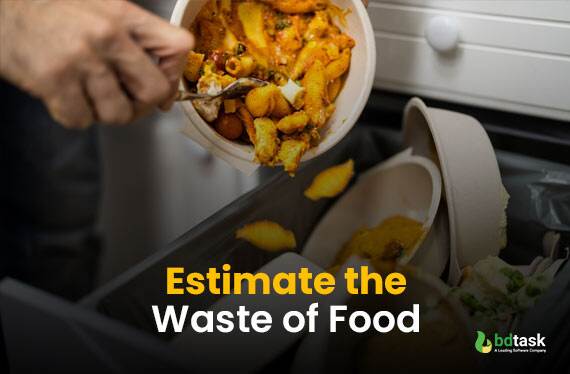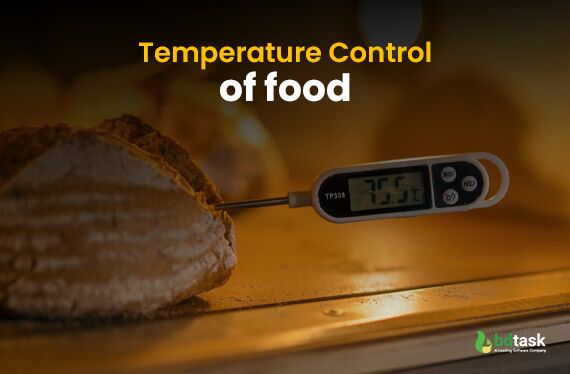How to Reduce Food Waste in Restaurants [10 Special Tips]
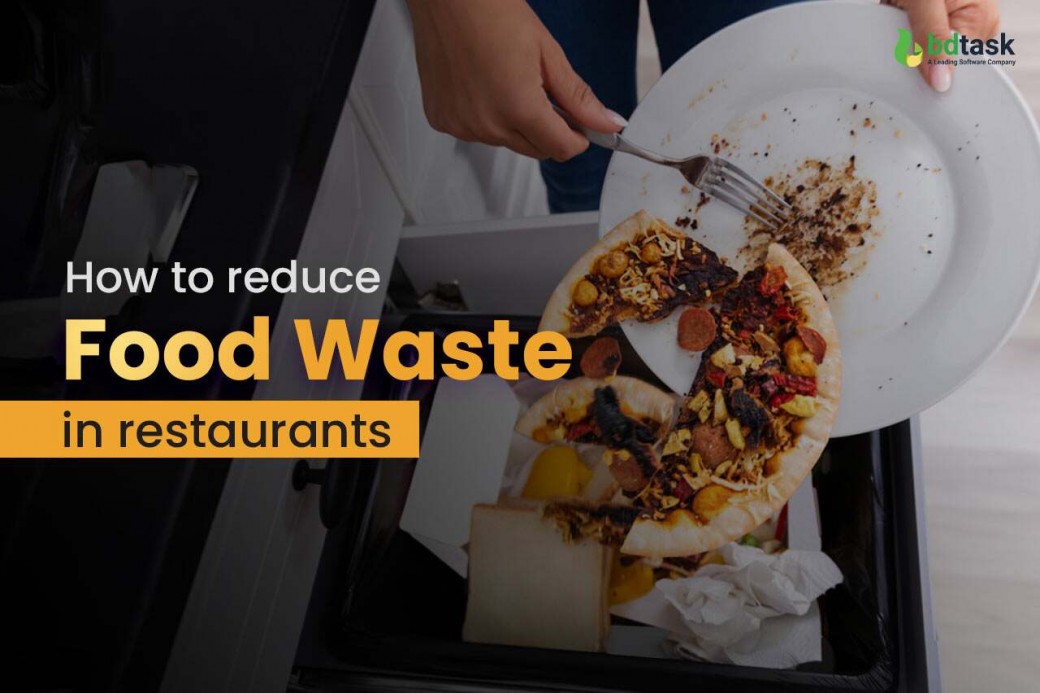
There is one problem growing in the modern world, and that is the wasting of food. Globally, the estimated amount of food waste is 1.3 billion metric tons per year. Also, it is 940 billion dollars per year globally after calculating the food waste cost. To prevent the problem, we must know how to reduce food waste in restaurants.
According to the research of the Food Agricultural Organization(FAO), this problem has become a serious issue in the world. In 2022, FAO estimated that between 691 million people were in food insecurity and 783 million people were hungry just because of food shortage.
We can understand that wasting food affects food shortage. Also affects other matters in the world. Restaurants are one of the main places where the food waste issue is too high.
Reasons of Restaurant Food Waste
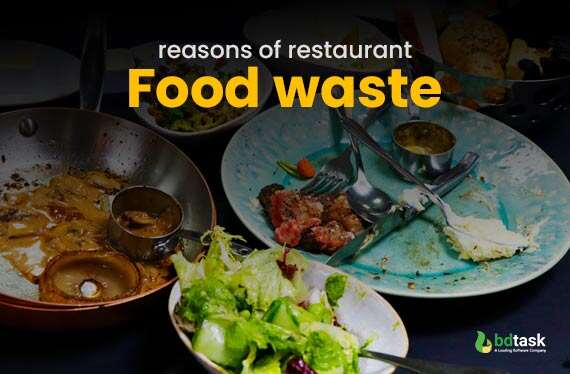
There are various reasons for wasting food in restaurants. Let’s explain point to point below:
i) Storage Food Improper Way
When we are about to store the food, we store it in a cool place. So the fridge is the best option for storing the food. But food gets spoils when we store it in the fridge for a long time.
Not every food has the same storage systems. Some foods are perfect for storing in a cool place and some foods are in a standard temperature place for storing. Sometimes it depends on the condition of the food. So, we must know the proper way of storing food so as not to spoil them.
ii) Food Over Cooked
There are too many dishes that are cooked and served to the guests in restaurants. So, as much as we can eat the food, the more food is served, and it is hard to finish.
As a result, people can't eat the leftover food and throw it away. So, a chef should know about the perfect calculation of food before cooking. Also, the guests should order food based on how much they can eat.
iii) Buying Unnecessary Meals
When there are product promotions in a super shop, people are influenced by promotions to buy food products that may be unnecessary to them.
So, they usually want to buy a bulk amount of food, which is not required in their regular meal plans. After that, those foods are spoiled before they have it.
iv) Freezing Insufficiency
There needs to be clarity about freezing food. That means there needs to be proper instructions on whether the food is suitable for freezing or not. For not knowing how to freeze it properly to maintain its quality. In that case, it can lead to food spoilage.
v) Confusion of Date Label
There needs to be more clarity when buying any food product. In the grocery store, there are Sell-by, best-by, use-by, and best-before dates. But what does that mean? If a consumer buys a food item on the sell-by date, then when does it expire?
Also, is there something spoiled after the best-before date? These labels confuse and lead to food items being thrown away.
Types of Restaurant Food Waste
Many reasons may occur for wasting food in restaurants. However, there are two major types of food waste in restaurants. Those are:
>Pre-Consumer Waste
Pre-consumer means all of the food stocked in your restaurant is spoiled before it is served to the consumer.
For example, if there is a dish cooking for the guest in a restaurant. But that food is grilled and burnt too much, which cannot be served to the guests. Because it becomes useless for eating, and this is Pre-consumer waste.
>Post-Consumer Waste
Post-consumer waste means all of the foods get wasted after serving the food to the consumers. That means the food was cooked and served to the customers, and the food is wasted after serving to the customers.
It is commonly seen that most of the guests leave their food uneaten. Those leftovers are more than half of the food in restaurants. Almost 17% of guests left the food uneaten. And those foods get spoiled. That's Post-consumer waste.
10 Advices of How To Reduce Food Waste In Restaurants
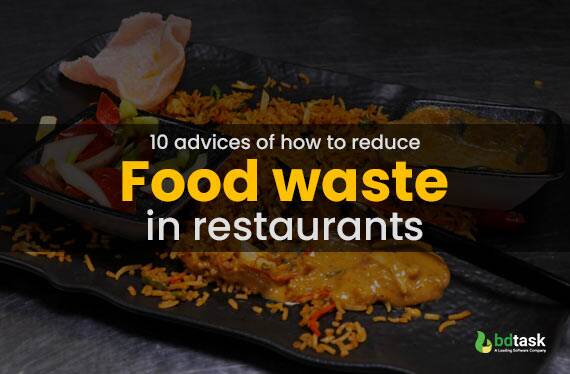
We know that there are so many people wasting food in restaurants. People who are concerned about not wasting food, they usually search in search engines "What is the best way to reduce food waste?”, "what can restaurants do to reduce food waste?" or many more questions just to want the best solutions they are looking for.
There are many ways to reduce food waste. There are also many solutions to this problem. Let me tell you the best ten pieces of advice on how to reduce food waste globally. So let's check down below:
1. Anticipating Food Order
You can prevent food waste by predicting the food order method. You can be benefited by using pos system because you can precisely anticipate the food orders with this digital technology.
So you can get more specific data, more understanding of food order techniques, and more control over the restaurant's kitchen. This thing will lead you to less wasting of food.
2. Estimate the Waste of Food
To reduce the waste of food in the restaurant, you should measure the food usage and waste. Many restaurants find the opportunities to scale back production while they can meet the customer demand.
So, you can track by food waste tracking system, so that you can understand how much food is wasted. In addition, you can monitor the progress if there is a need to implement any changes.
3. A Proper Plan for Extra Food
Every restaurant owner needs to gain the ideas of customer demand. So it will be easier to predict what customers want. There are more extra ingredients in the restaurant's kitchen. If those are not in plan to use, those ingredients will go to waste.
How about if you use the leftover ingredients the next day as a lunch special offer? If it's not left "used by" date, you can use it.
4. Upgrade the Inventory Management
Did you know that wasting or spoiling food can be the reason for the loss of sales in restaurants? Yes, you heard right! It would help if you were an expert on the restaurant inventory system so that you can manage the food waste in restaurants.
Try the FIFO (first in, first out) method in the inventory system. It can rotate your inventory so that old products will come first. They get used first before spoiling, and labeling all the products with "used by" dates will make this a breeze.
5. Train the Staff Properly
There is a law that all food handlers must be trained in an effective way for restaurants in food safety. In training, they should also be taught how to reduce wasting of food. Wrap found that almost 45% of food was wasted just because of the contribution of poor food preparation. And this is the biggest contributing factor.
Therefore, if the staff is well trained on how to store food correctly, control the temperature of food, and cook dishes more perfectly, there can be a chance to reduce Food waste.
6. Observe the Overproduction
Many restaurants follow the batch preparation system just to save time and money. Once you start to calculate food waste in your restaurant business, then you will observe that shifting away in favor of cook-to-order preparation. It will save you money for a long time.
7. Weekly Special Offer
A special offer campaign is a great technique for reducing food waste. On weekly rotations on your inventory items, you can apply a weekly special strategy to promote foods using excess inventory from the running week.
For example, you can give a special combo offer for the weekend. So You can clear your inventory and prevent food waste.
8. Temperature Control for Food
Temperature is important for controlling the quality of food. It means good temperature prevents the growth of harmful bacteria. This harmful bacteria is caused by spoiling food.
Also, There are some foods that do not effect if reheated. You can reheat the food but at a proper temperature. Because different foods have different temperature-consuming abilities. So, by maintaining the temperature, you can reduce the food waste.
9. Labeling Food Correctly
Labeling food is important for preventing Food waste. If there are dishes that are decanted into separate containers, you have to make sure first that they are markedly labeled with allergen, product details, and date.
By labeling the product, anyone can know the date, and it is easier to track what you have and what needs to be used. The unlabeled food products are thrown away just because of not understanding the details of the product.
10. Donate Food
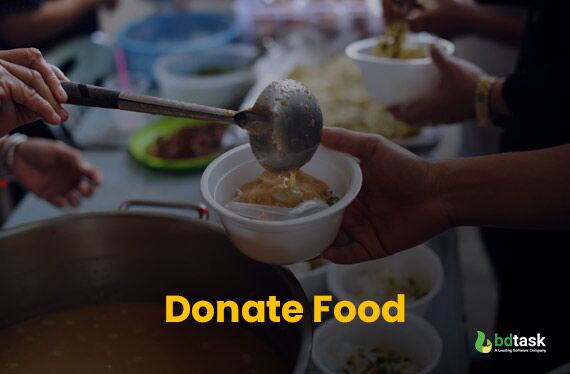
Donating food is a great option for saving food. You know that there are many homeless people around who cannot purchase food. Many organizations collect food for the homeless people.
Many restaurants can donate food to organizations or give away the food to the homeless peoples. This method can reduce food waste, and people experiencing homelessness can get food.
There may be many other solutions you can find. If you follow at least these pieces of advice given above you, that is enough the solution of How to reduce food waste in restaurants.
Benefits of Reducing Food Waste
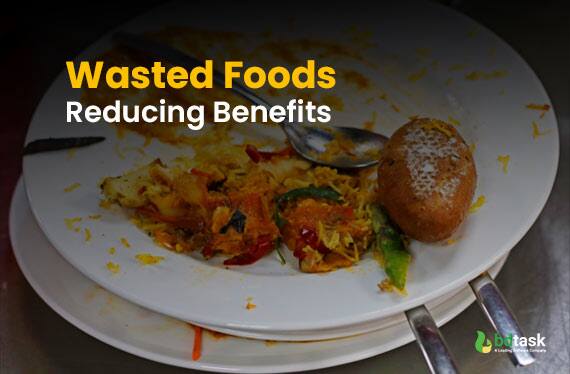
There are many benefits to reducing wasting foods. Let's check the points below:
Save Your Money
You can save your money by purchasing an excess amount of food product. You may be influenced by watching many advertisements or promotions in the super shop which influence you to buy more food. But after buying over food products. We may not consume that product.
In addition, you may purchase some unnecessary products for you. As a result, those extra products get spoiled. So buy limited food and save your money.
Profit Increased
We have already observed that investing 1% reduces food waste. And it can result in up to 600% return on your investment. This matter suggests that you can get profit by also saving the money. So, less of the food will be wasted and also any kind of food that makes it to your guest’s plates equals a profit.
Restaurant’s Carbon Footprint Reduction
We observed that there is a huge impact of restaurant food, that is, having a greenhouse effect. If you reduce the food waste and also improve the recycling behavior, then you can reduce the carbon footprint of the restaurant.
Increasing Community Welfare
There is another best benefit that is increasing community welfare. How is it beneficial? Well, the social welfare organizations usually donate safe food to those who are homeless, helpless, or who do not have the ability to buy food. This community works for them.
This community needs a large portion of food so that they can work for them. If the restaurants donate the leftover food to the welfare, their community welfare will increase for donating the safe food.
FAQ
What is the reason for wasting too much food in restaurants?
- The reasons for wasting too much food in restaurants are wrong calculation of portions, bad recipe management, spillage, and spoilage of food.
How much food is wasted only from the restaurants?
- There are 22 to 33 billion pounds of food wasted just in America. If we calculate it globally, then the result is 1.3 billion tons per year. So it is a huge result!
Does food waste affect climate change?
Of course, it affects climate change. If the food waste cannot be handled properly, it has to be buried in the landfill. So, methane gas will be produced from food rotting in an environment which can be the cause of oxygen shortage.
Conclusion
Finally, we have gathered enough ideas on how to reduce food waste in restaurants from this article. In restaurants, reducing food waste is one way to control the entire food waste in the world. Since the food waste is organic, it will be easier to recycle the waste entirely.
Moreover, the restaurants are not only responsible for wasting food but also the guests of restaurants. Guests also should not order too much food, which they cannot finish.
So, after maintaining all of this, we can reduce food waste in the whole world.
Also Read:
